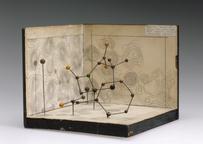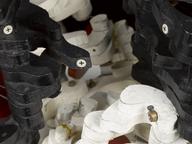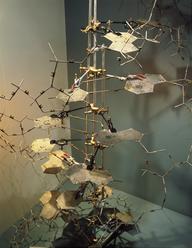

Model of penicillium mould spore from Glaxo Laboratories, c.1960
- Made:
- circa 1960

Model of penicillium mould bud, from Glaxo Laboratories, c.1960
This is a model of a penicillium mould spore. Penicillium is a group of moulds that includes Penicillium chrysogenum (first known as Penicillium notatum), the mould from which the antibiotic penicillin was derived and first identified by Sir Alexander Fleming in 1928. The discovery of penicillin ushered in a new age of antibiotics derived from microorganisms, and the drug saved millions of lives by treating bacterial infections.
The name Penicillium comes from the resemblance of the spore producing structures, called conidiophores, to a paintbrush. Penicillus is the Latin word for paintbrush.
The model came from Glaxo Laboratories in 1963. Glaxo was one of a number of British companies to industrially produce penicillin during the Second World War.
Details
- Category:
- Biochemistry
- Object Number:
- 1963-375
- type:
- model
- credit:
- Glaxo Laboratories Limited




